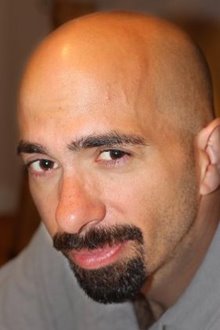From Matewan
I'm in a decrepit hotel in Matewan, West Virginia -- the area famous for the Hatfield-McCoy feud, among other also-violent happenings, mostly involving coal mining and unions, sometimes a flood. We drove the poorest Appalachia to get here. Matewan, with a population of about 498 is actually quite a bit larger than the 'towns' we went through to get here. All no more than a quarter mile in diameter, restricted by the mountains, these collections of buildings exist only because of the railroad tracks that wind through the bases of the mountains – the tracks upon which is delivered the coal, coal, coal. Most of the buildings in these railtrack-side towns are prefab or trailer homes. I think that carting things away is too expensive or too much effort for many. Junked cars, appliances, etc. pile up next to buildings and frequent burned out shells of homes stand next to still-occupied ones. There is no shortage of churches. The denominations one would expect in this land – Baptist, Revival, Methodist, Zionist, Fundamental, are all within walking distance of any domicile in these towns. But even the churches look sad and more than a handful have been abandoned; left to be devoured by the elements. No matter what your beliefs, a house of worship crumbling down upon itself, is one of the bleakest sites to see, especially in a town that is not quite dead. The mile long trains laden with Coal frequently lumber down the tracks and the massive coal mines themselves, appearing suddenly as one goes around a bend in the road, are an impressive sight. In one place, we actually drove under a huge conveyor belt that moved coal from the mountain on one side of the road, to the tracks on the other side. Disturbing to see are the areas where strip mining has occurred. Huge swaths of forest, hundreds of feet across – one seemed to be about a mile across, are gone, bare ground chewed into by machinery. They look like bomb blasts. And another form of mining that I was not aware of is also taking place: mountaintop removal. I leave it for the interested person to click on that hyperlink to learn more. Tomorrow will be cold so I'm preparing as best as possible. It's hard to believe that I'll be back in L.A. in a few days. It seems so distant from where I am right now. Another horn of a diesel engine has sounded. Another mile-long train, cars piled high with coal is beginning to pass. I'll go to the window to watch it, then to sleep.
Squeaking, clacking and low rumbles of a mile-long coal train are echoing outside of my window as I write this. The tracks are only a quarter mile away and it is sound I have heard often over the last couple nights. The streets are shiny wet from a light snow that is falling but not quite sticking.
I took this picture not knowing what exactly was being said. Click on the picture to see it in full size -- then zoom in on the sign to see what caught my eye. Googling provided the answer. It is the sign of one Mick McCoy, an English teacher in these parts. Were it not for that sign, I would not have become aware of this insidious form of mining.






It's appalling that we live in a time where it's easier to eradicate a mountain rather than discover alternatives. If that means coal mining that is inherently dangerous or simply exploring other ways to power our civilizations, it's as if we are to lazy to explore other options. I hear that it's nice and warm back on the west coast, I'm sure you will be relieved to be home.
ReplyDeleteHopefully, Mountain top removal will be illegalized before too long. It's a pretty devastating way to go about getting the coal.
ReplyDeleteYes, I can't wait to be back in L.A. Home sweet home.
hey stefan, i was googling and found your post on the sundance writers lab. i was wondering if you heard from them yet about a final decision. i, too, sent in a script but am anxious to hear from them. my name is michael, thanks!
ReplyDelete